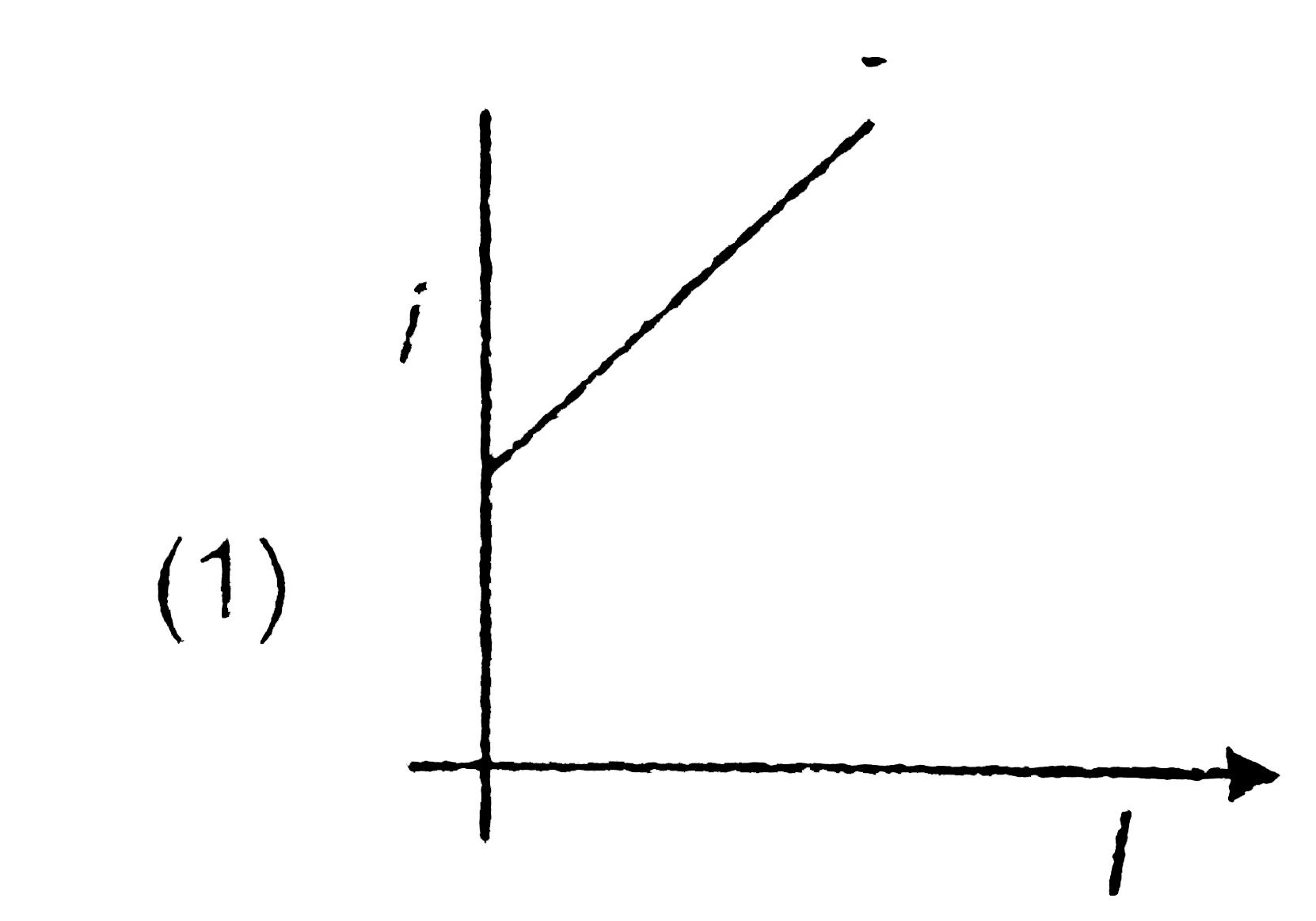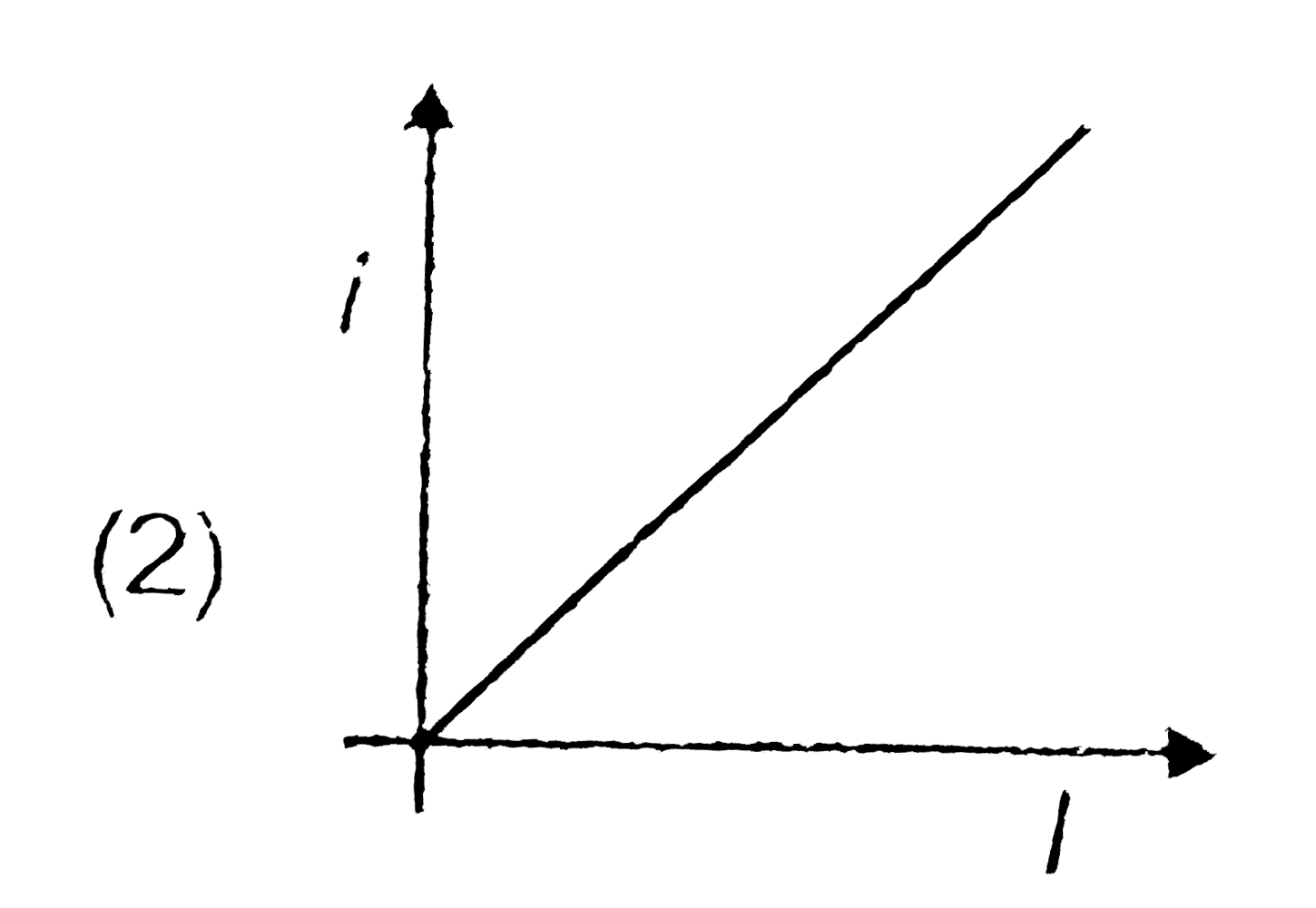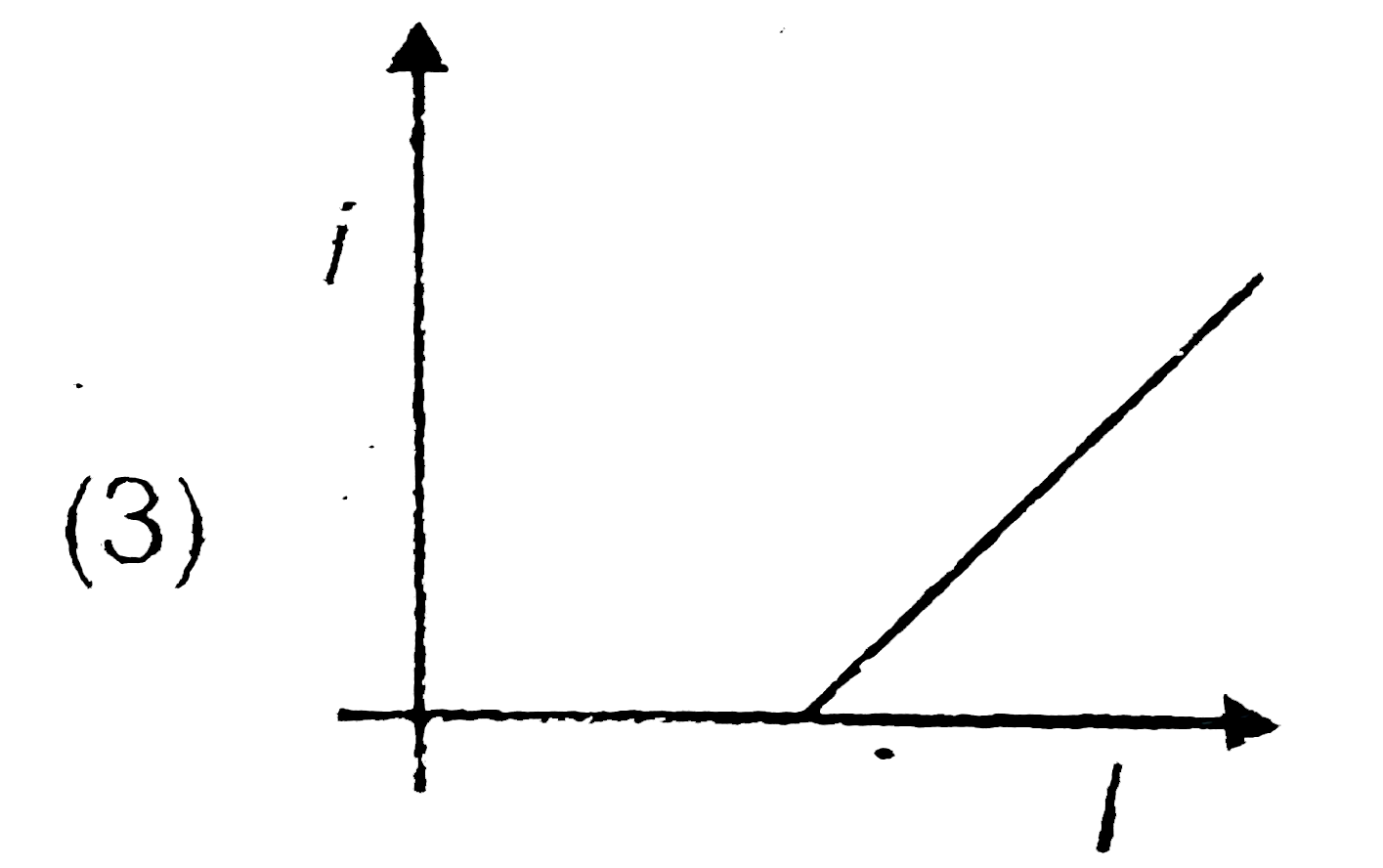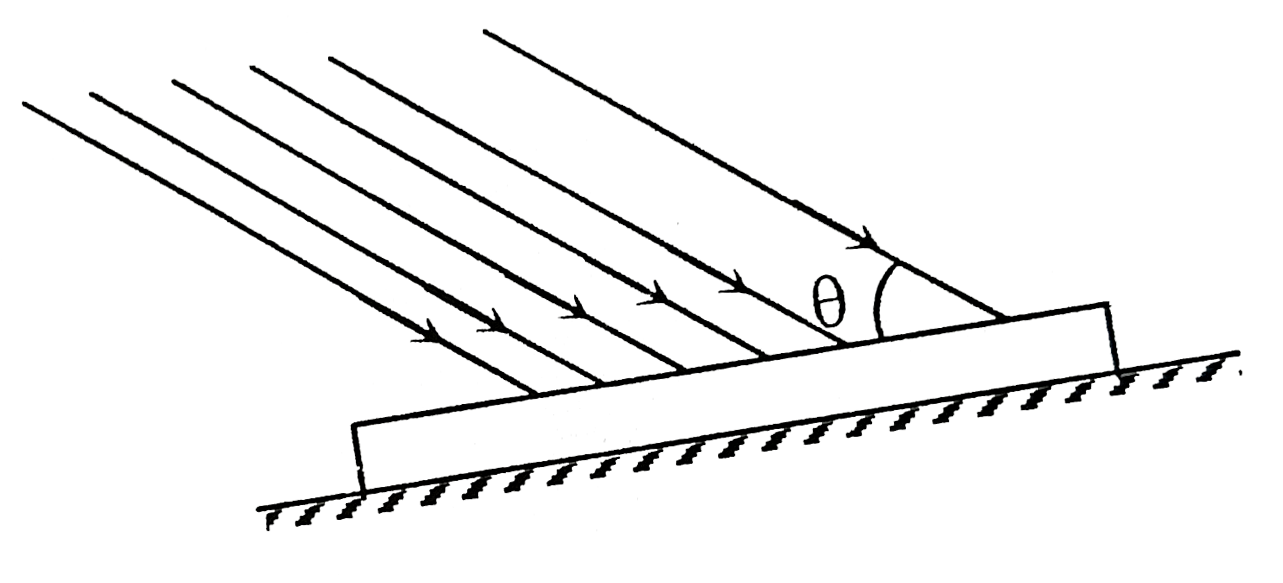The graph between intensity of light falling on a metallic plate (l) with the current (i) generated is




The correct Answer is:2
To solve the problem of determining the graph between the intensity of light falling on a metallic plate (I) and the current (i) generated, we can follow these steps:
1. Understanding Intensity and Power:
- Intensity (I) is defined as power (P) per unit area (A). Mathematically, it can be expressed as:
I=PA
- Power (P) can be defined as energy (E) per unit time (t):
P=Et
2. Relating Intensity to Number of Photons:
- If we consider the energy of a single photon, we can say that the total energy for n photons is:
E=n⋅e
- Therefore, substituting this into the power equation gives:
I=n⋅eA⋅t
- This shows that intensity is directly proportional to the number of photons (n).
3. Understanding Current:
- Current (i) is defined as charge (Q) per unit time (t):
i=Qt
- The charge (Q) can be related to the number of electrons ejected by the photons. Since each photon can eject one electron, we can say:
Q=n⋅e
- Substituting this into the current equation gives:
i=n⋅et
4. Establishing the Relationship:
- From the previous steps, we can see that both intensity (I) and current (i) are directly proportional to the number of photons (n):
I∝nandi∝n
- Therefore, we can conclude that:
I∝i
- This indicates a linear relationship between intensity and current.
5. Graph Characteristics:
- Since both intensity and current are directly proportional, the graph will be a straight line.
- Additionally, if there is no intensity (I = 0), there will be no current (i = 0). Thus, the graph must pass through the origin.
6. Choosing the Correct Graph:
- Among the options provided, we need to select the graph that is linear and starts from the origin. This leads us to conclude that the correct graph is option number two.
Final Answer:
The graph between the intensity of light falling on a metallic plate and the current generated is a straight line passing through the origin (option number two).
- Intensity (I) is defined as power (P) per unit area (A). Mathematically, it can be expressed as:
I=PA
- Power (P) can be defined as energy (E) per unit time (t):
P=Et
- If we consider the energy of a single photon, we can say that the total energy for n photons is:
E=n⋅e
- Therefore, substituting this into the power equation gives:
I=n⋅eA⋅t
- This shows that intensity is directly proportional to the number of photons (n).
- Current (i) is defined as charge (Q) per unit time (t):
i=Qt
- The charge (Q) can be related to the number of electrons ejected by the photons. Since each photon can eject one electron, we can say:
Q=n⋅e
- Substituting this into the current equation gives:
i=n⋅et
- From the previous steps, we can see that both intensity (I) and current (i) are directly proportional to the number of photons (n):
I∝nandi∝n
- Therefore, we can conclude that:
I∝i
- This indicates a linear relationship between intensity and current.
- Since both intensity and current are directly proportional, the graph will be a straight line.
- Additionally, if there is no intensity (I = 0), there will be no current (i = 0). Thus, the graph must pass through the origin.
- Among the options provided, we need to select the graph that is linear and starts from the origin. This leads us to conclude that the correct graph is option number two.
The graph between the intensity of light falling on a metallic plate and the current generated is a straight line passing through the origin (option number two).
Topper's Solved these Questions
- DUAL NATURE OF RADIATION AND MATTER BOOK - AAKASH INSTITUTE ENGLISHCHAPTER - DUAL NATURE OF RADIATION AND MATTER EXERCISE - ASSIGNMENT SECTION B.Objective (Only one answer)
6 Videos
- DUAL NATURE OF RADIATION AND MATTER BOOK - AAKASH INSTITUTE ENGLISHCHAPTER - DUAL NATURE OF RADIATION AND MATTER EXERCISE - ASSIGNMENT SECTION C. Objective (More than one answer)
4 Videos
- DUAL NATURE OF RADIATION AND MATTER BOOK - AAKASH INSTITUTE ENGLISHCHAPTER - DUAL NATURE OF RADIATION AND MATTER EXERCISE - Try Yourself
41 Videos
- CURRENT ELECTRICITYBOOK - AAKASH INSTITUTE ENGLISHCHAPTER - CURRENT ELECTRICITYEXERCISE - ASSIGNMENT SECTION-J
10 Videos
- ELECTRIC CHARGES AND FIELDS BOOK - AAKASH INSTITUTE ENGLISHCHAPTER - ELECTRIC CHARGES AND FIELDS EXERCISE - comprehension
3 Videos
Similar Questions
if the intensity of light is made 4I0, then the saturation current will become
View SolutionIn a Young's double slit experiment, the separation between the two slits is d and the wavelength of the light is λ. The intensity of light falling on slit 1 is four times the intensity of light falling on slit 2. Choose the correct choice (s).
View SolutionThe frequency of incident light falling on a photosensitive metal plate is doubled, the KE of the emitted photoelectrons is
View SolutionRadiation of intensity 1W/m2 are striking on a metal plate. The pressure on the plate is
View SolutionThe intensity of light falling on a phototube is increased while keeping the no of photons falling per second constant. Assuming that photoelectric field does not change then :
View SolutionThe frequency and the intensity of a beam of light falling on the surface of a photoelectric material are increased by a factor of two. This will
View SolutionThe intensity of a light pulse travelling along an optical fibre decreases exponentially with distance according to the relation l=i0e−0.0693x where x is in km and l0 is intensity of incident pulse. The intensity of pulse reduces to 14 after travelling a distance
View Solution
A metal surface in an evacuated tube is illuminated with monochromatic light causing the emission of photoelectrons. For a given intensity of light, a graph between saturation current and potential of the electrode is given in Fig. If the experiment were repeated with light of twice the intensity but the same wavelength, which of the graphs below would best represent the new relation between I and V?(Dotted represents initial condition)
View SolutionMonochromatic rays of intensity I are falling on a metal plate of surface area A placed on a rough horizontal surface at certainn angle θ as shown in figure. Choose correct statement (s) based on above information
 a) There is a value of
θ
for which plate will not move however high the intensity of radiation is
b) Plate will not move if plate if perfectly reflecting irrespective of the value of intensity
c) If rays are falling perpendiculars to surface plate will not have
d) none of these
a) There is a value of
θ
for which plate will not move however high the intensity of radiation is
b) Plate will not move if plate if perfectly reflecting irrespective of the value of intensity
c) If rays are falling perpendiculars to surface plate will not have
d) none of these
View SolutionUnpolarised light falls on two polarizing sheets placed one on top of the other. What must be the angle between the characteristic directions of the sheets if the intensity of the final transmitted light is one-third the maximum intensity of the first transmitted beam?
View Solution
